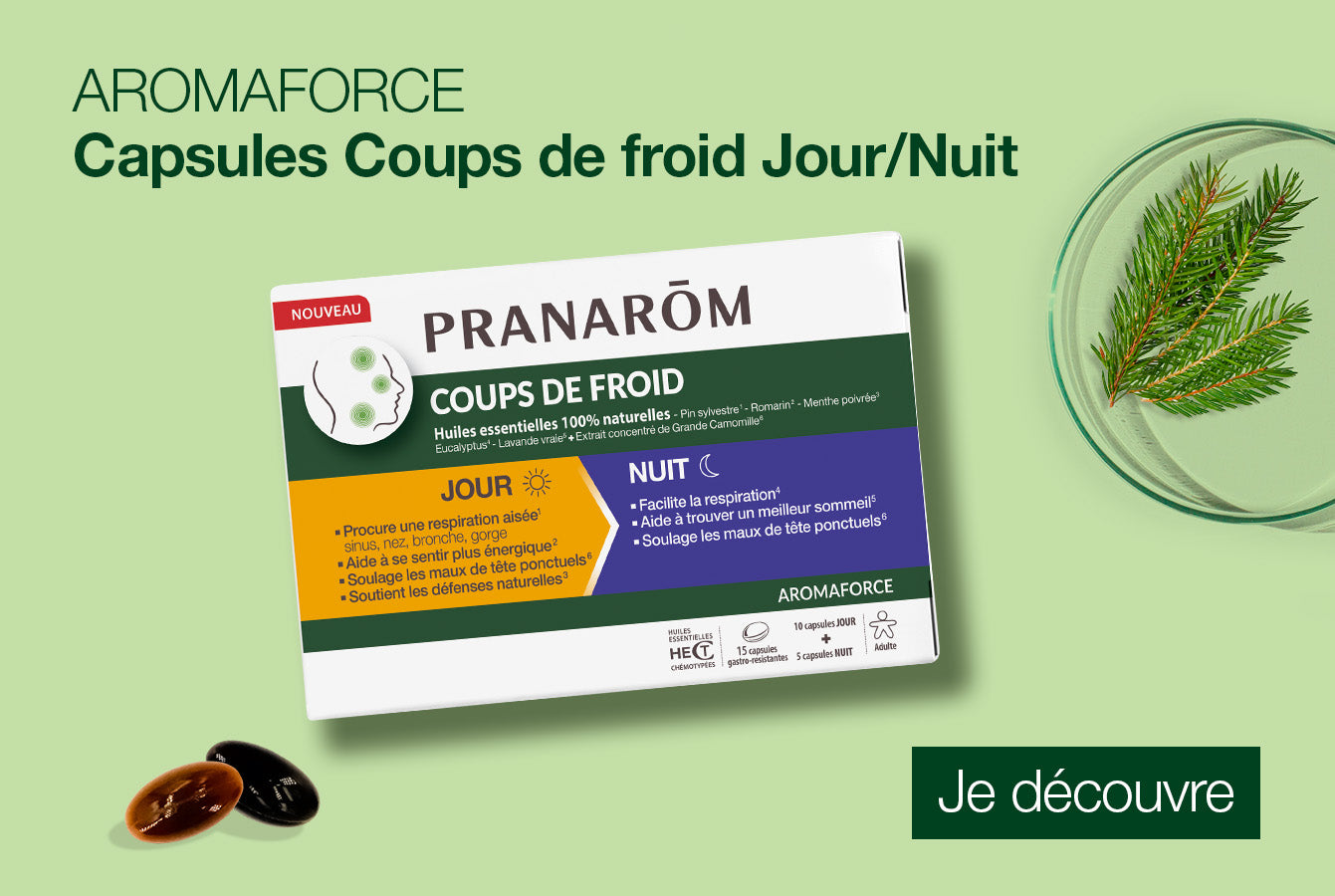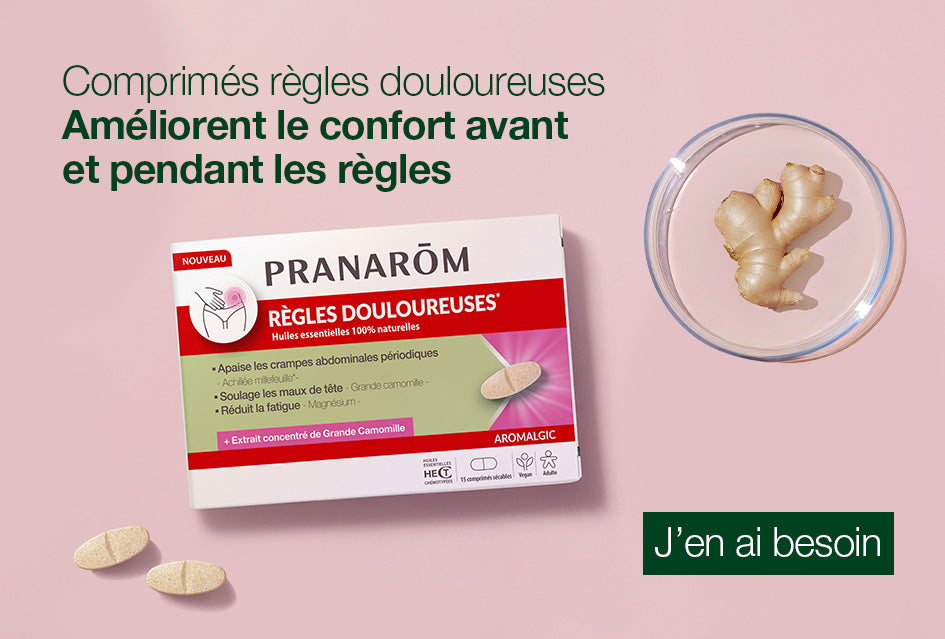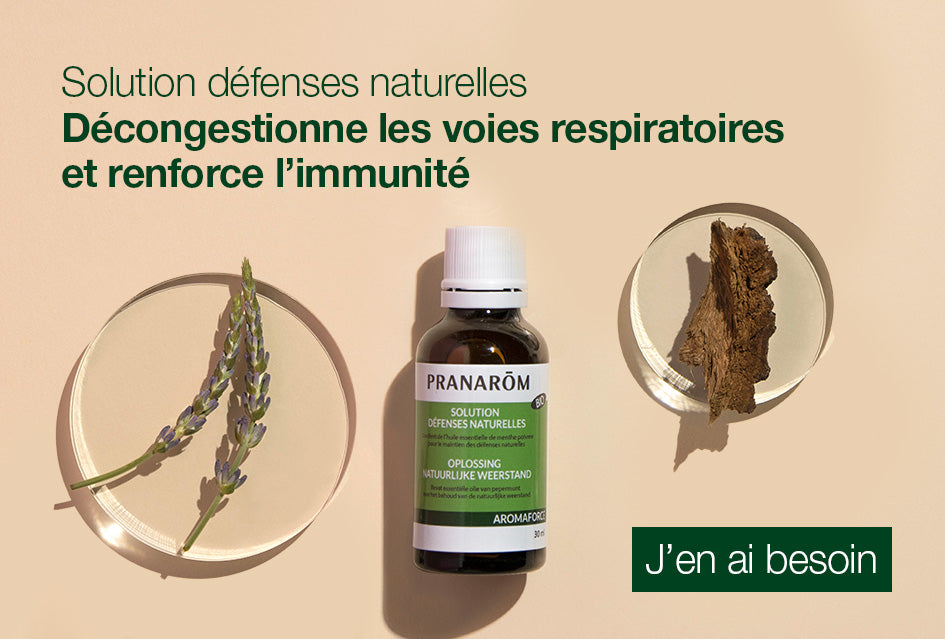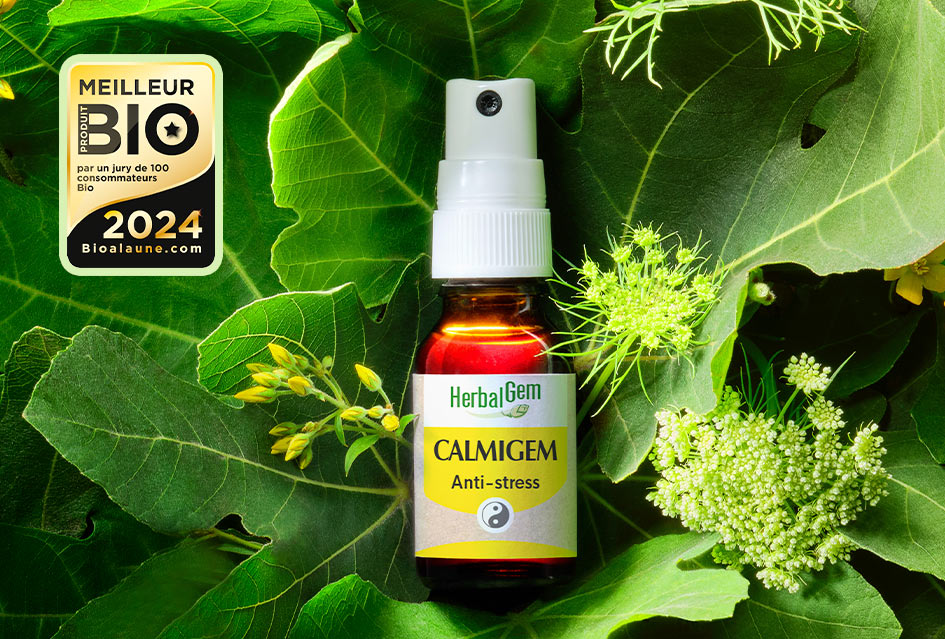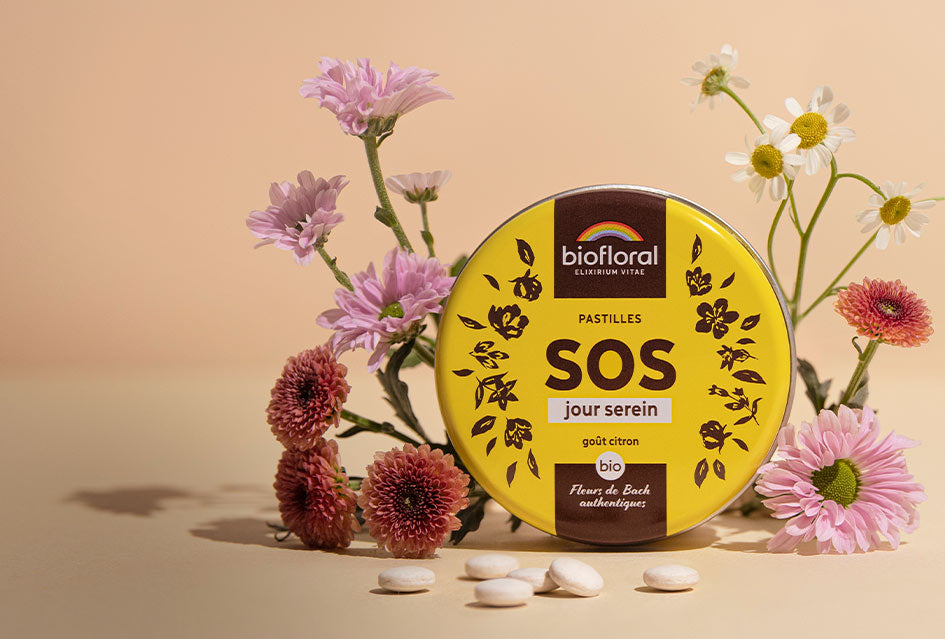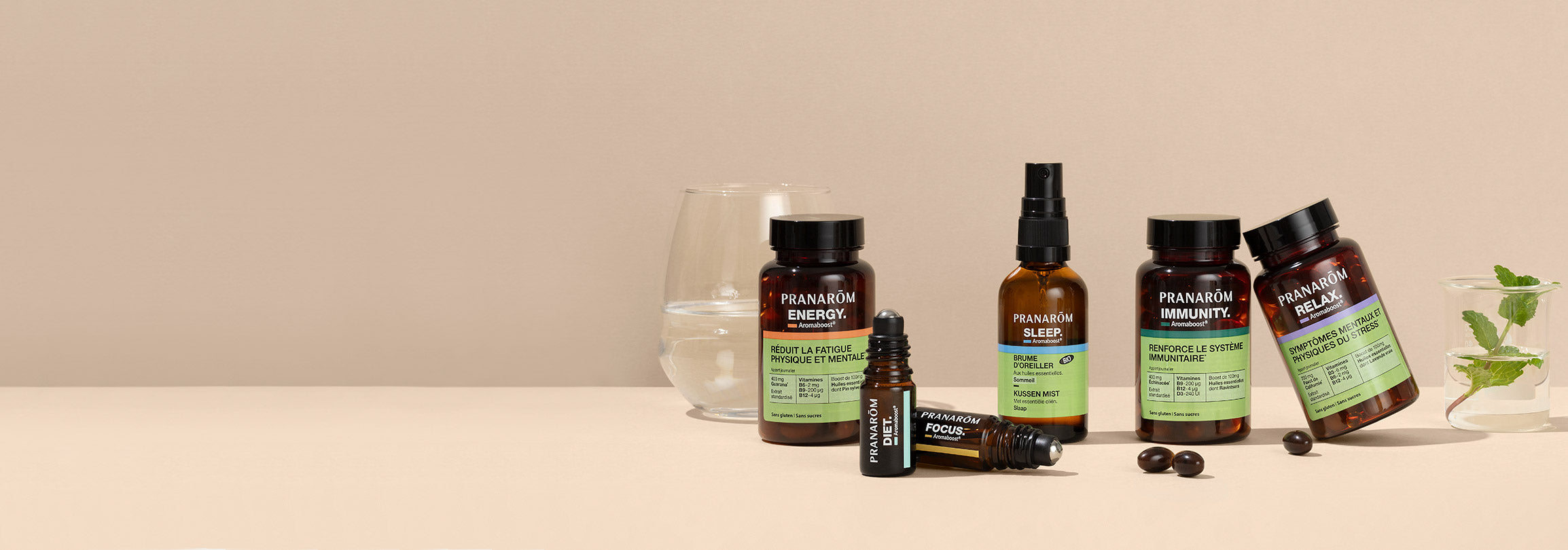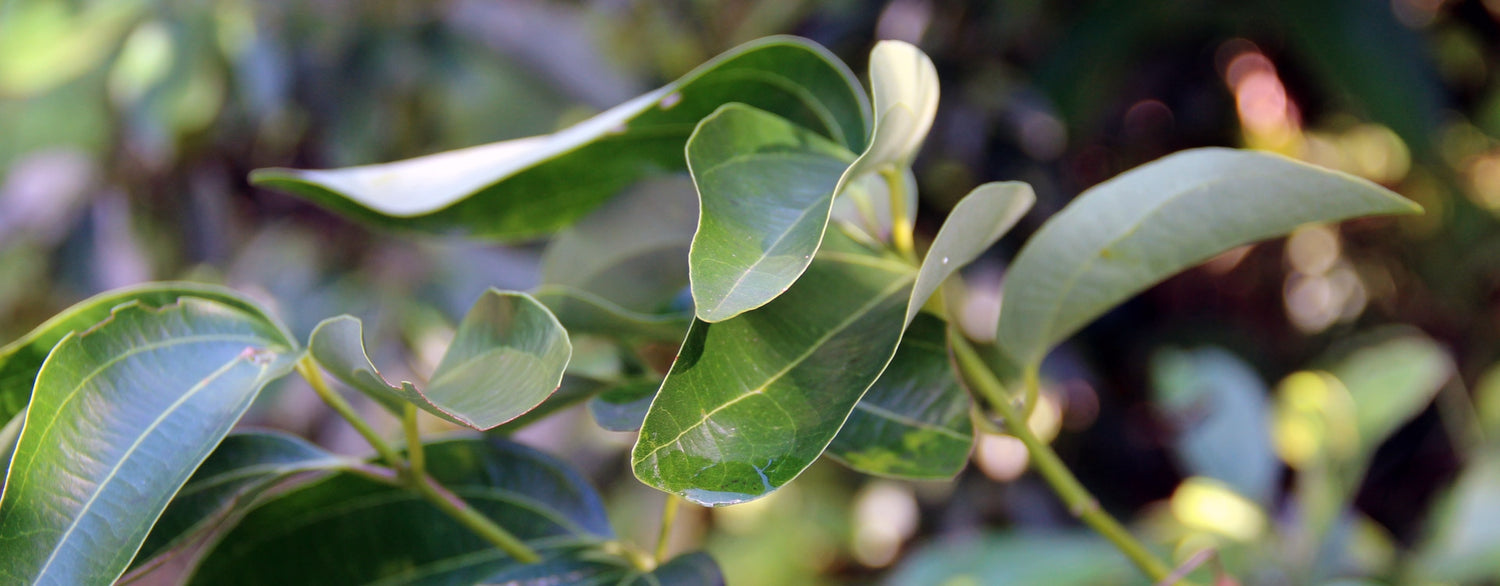The fragrance of the Essential Oil is characteristic of its majority molecule, 1.8 cineole, and could be mistaken for an essential oil of any eucalyptus.
Not to be confused...
Ravintsara is a Cinnamomum camphora CT cineole. It should not be confused with Ravensara aromatica, which does not have the same therapeutic properties. These are clearly two different plants with different uses. Cinnamomum camphora was originally brought to Madagascar by the Chinese, but over time the synthesis of its essence changed, with 1.8 cineole (= eucalyptole) being added to the detriment of camphor. Ravintsara is the perfect example of the notion of chemotype or biochemical race of Essential Oil.
Therapeutic activity of Ravintsara
Ravintsara's therapeutic activity is that of the synergistic couple 1.8 cineole (terpene oxide) and alpha-terpineol (terpene alcohol), i.e.: anticatarrhal, expectorant, broad-spectrum antiviral, immunostimulant, positivising, reenergising, parasifugal.
The diseases for which ravintsara is recommended are viral diseases affecting the respiratory tract: ENT (sinusitis, otitis, colds, chills, catarrh). As well as the upper part of the respiratory tract: laryngitis, tracheitis, angina, sore throat, etc., and the lower parts of the respiratory tract: pneumonia, bronchiolitis, cystic fibrosis superinfections, influenza. Viral skin diseases can also be treated: chickenpox, shingles, herpes labialis, warts, etc. Other viral diseases affecting the digestive tract: gastroenteritis, diarrhoea, hepatitis, and the list goes on.
It is also useful in cases of loss of tone in the nervous system and the resulting disorders: profound asthenia, seasonal asthenia, insomnia, melancholy, depression, lack of energy, etc.
A major essential oil for immune support, Ravintsara plays a major role in preventing the risk of viral infections. The body's natural defences are optimised by the immunomodulatory effect of this leading essential oil. It's a must-have in any aromatic pharmacy worthy of the name!
But what else?
Ravintsara Essential Oil is perfectly tolerated by the skin, making it ideal for all anti-infectious synergies. That said, for the comfort of all skin types, it is recommended that it should not be used pure on the skin (although this is not strictly forbidden). A 50% dilution in a vegetable oil is perfectly suitable for any patient over the age of 6, while a 30% dilution in a vegetable oil is best for use on young children. Ravintsara can therefore be found in all galenic forms for external use in the right concentrations: suppositories, topical solutions, massage oils, nasal drops, gels and creams, talcum powder, clay, etc.
It can also be taken orally in doses of less than 5 drops per dose in honey, cane sugar, yoghurt, breadcrumbs or even with a bud macerate. However, all these galenicals and routes of administration require expertise in this field, which is why reading serious books, learning from quality teaching, common sense and reason are the guarantees of the best effectiveness in complete safety.
There is, however, one point that may cause annoyance. While we must avoid falling into the trap of over-dramatisation or paranoia, every medal has its downside. Indeed, 1.8 cineole (the main molecule in Ravintsara) can be toxic to nervous tissue depending on the concentration of the molecule in the Essential Oil, the dose administered, the number of applications, the patient's nervous system and whether or not 1.8 cineole is natural.
For these reasons, we will not use too much ravintsara (or any other essential oil containing this molecule) on patients at risk: babies under 30 months old with a family history of convulsions or epilepsy, neurologically-affected patients. Use during pregnancy or breast-feeding requires expert advice from a therapist with recognised expertise in scientific aromatherapy.
Here are some of the main therapeutic indications for Ravintsara:
Infectious mononucleosis caused by the Epstein-Barr virus
HECT Ravinsara: 18 ml ;
HECT Thyme CT linalol: 8 ml ;
HECT Lemongrass: 2 ml ;
HECT Black Spruce: 2 ml.
Apply 8 to 10 drops to the inside of each arm 8 to 10 times a day for 3 days, then halve the dose (5 drops) and the number of applications (5 times a day) for 3 weeks. And take 2 Oléocaps 4 capsules, 3 times a day with meals (for 3 weeks).
The treatment is applicable from the age of 12, provided that the patient is not neurologically affected and that the patient is not pregnant or breast-feeding.
Prevention of infection in winter
HECT Ravintsara: 5 ml ;
HECT Maritime Pine: 3 ml ;
HECT Palmarosa: 2 ml ;
Essence of lemon (zest): 5 ml.
6 to 8 drops in an ultrasonic diffuser for diffusion 2 to 3 times a day for a minimum of 30 minutes.
Synergy for colds or catarrh
HECT Ravintsara: 6 ml ;
HECT Thyme sateoide: 2 ml ;
HECT Eucalyptus menthol: 2 ml.
Children from 30 months to 6 years.
3 to 4 drops of the synergy + 3 drops of Apricot Kernel vegetable oil on the chest or back, 3 to 5 times a day depending on the severity of symptoms.
Bonus: 6 drops in boiling water on an inhaler for a minimum of 5 minutes, 2 times a day.
Contraindications: pregnancy, breast-feeding, neurological pathologies.
Article written by Dominique Baudoux, founder of Pranarôm aromathérapie scientifique.
Pranarôm offers Ravintsara oil in a variety of packaging: Pearls, single oils, ....
This essential oil is indispensable for combating winter ailments and is used in the composition of many of our finished products.


